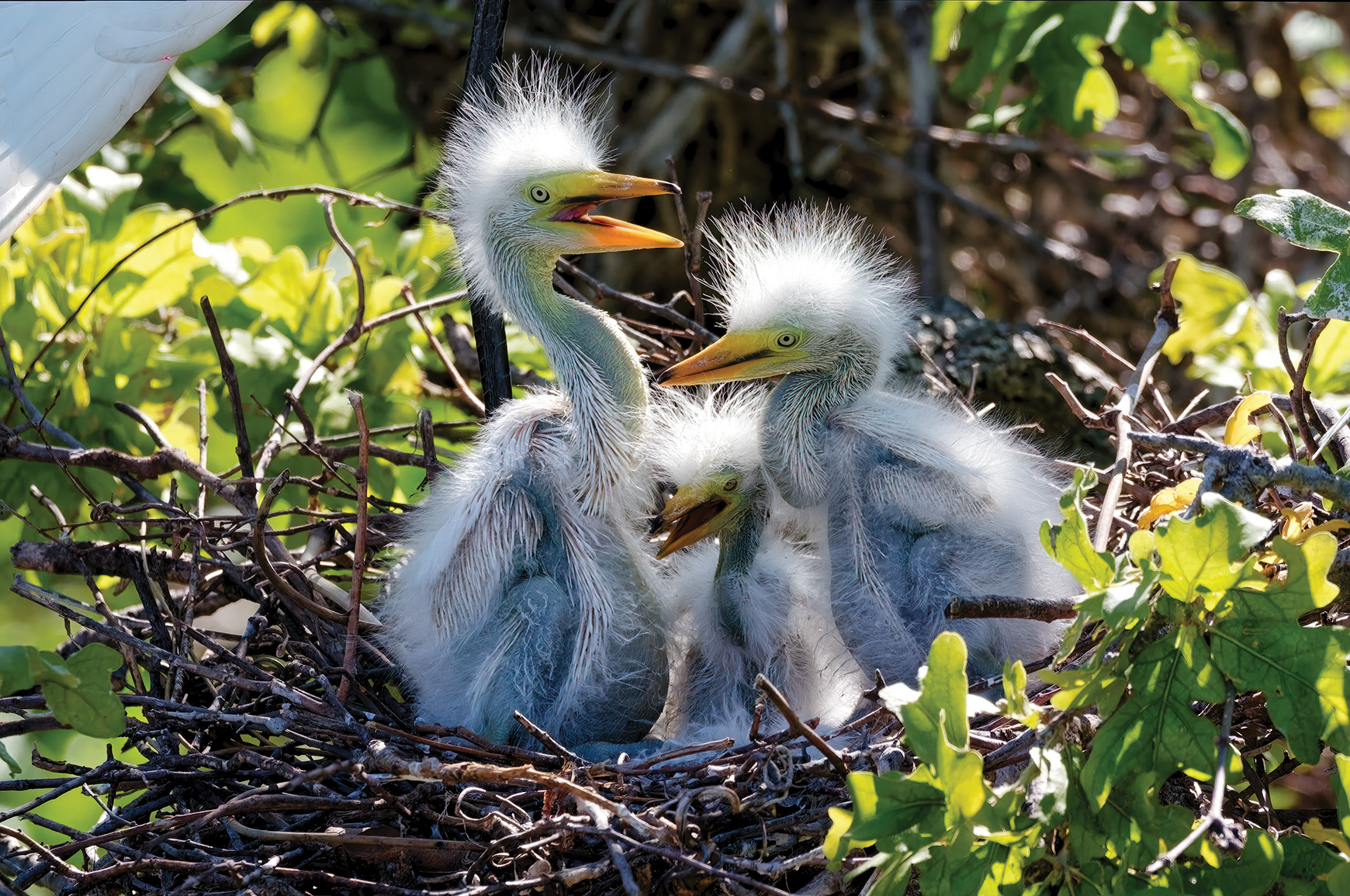Urban Rookeries Can Create Human Vs. Wildlife
Conflicts

With spring nesting season in full swing, many major cities around Texas are preparing for an influx of birds to establish urban rookeries. These nesting bird colonies are often established in highly populated areas, especially near water, and can be home to thousands of birds during the season.
During winter and early spring, yellow-crowned and black-crowned night herons begin congregating in areas to scout for suitable spots that could become rookeries. Once established, these rookeries host a variety of different species such as great egrets, snowy egrets, yellow-crowned night herons, double-crested cormorants and cattle egrets.
Close to downtown Dallas, Texas Parks and Wildlife Department urban wildlife biologist Sam Kieschnick leads nature walks through a small, wooded area at the University of Texas Southwestern Medical Center. This bird sanctuary is a protected spot where visitors can view the birds during rookery season. “Birds return to this area year after year, and it's great that the management and community members appreciate this refuge for the birds,” Kieschnick says. “I know of very few other places in Texas where you can actually look down onto a rookery from the nearby parking garage — what an experience!”
For some residents, urban rookeries are fascinating nesting habitats, and for others, they are a nuisance. Sometimes these urban rookeries become established in places also used by people — highly utilized locations such as playgrounds, parks or neighborhood streets, creating potential conflicts. Rookeries often create noisy, messy and smelly areas that can pose potential health hazards for people. In San Antonio, a cattle egret rookery at Brackenridge Park has negatively impacted water quality in the San Antonio River and caused the closure of playgrounds and structures at the park because of bird droppings. But don't start ruffling feathers yet. In urban environments, bird populations and humans can live in close proximity, and there are ways for folks to steer birds away from creating nests in certain areas.
Early detection of these rookeries can help deter their establishment. Before the first egg is laid, municipalities can use visual deterrents, scare tactics such as noise and techniques such as thinning the canopy of trees to discourage the birds. Once the first egg has been laid, it is prohibited to kill adult birds or harass them in a way that causes the abandonment or death of eggs or hatchlings.
TPWD urban wildlife biologists are also available to assist communities having issues with urban rookeries around the state. Contact information for local urban biologists can be found on the TPWD website.
The Migratory Bird Treaty Act of 1918 protects nearly all native species of birds, their eggs and nests. Violations of the act can result in fines or jail time. Once all the nesting activities have ceased, nests can be destroyed without special permits.
As urban areas continue to grow, these conflicts are becoming more and more common. Providing communities and homeowners with the right tools for addressing birds helps everyone coexist harmoniously.

